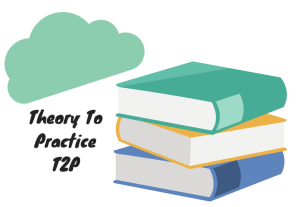jbrown and scortez
“The Internet is not a luxury, it is a necessity.” – President Barack Obama
What is Digital Citizenship?
Educators and students alike get excited about new and innovative approaches to teaching and learning. Extending learning from beyond the traditional hardbound textbook to include interactive digital platforms can go a long way toward engaging even the most reluctant learners. Providing students with opportunities to work in online formats to create, communicate, collaborate, and research can be exciting, but at the same time, this unlimited access to digital programs and social media makes it virtually impossible to monitor the appropriateness and safety of these tools or even the online behavior of our students.
Because our tweens and teens spend so much time in online formats, citizenship today is largely a digital concern (Krutka & Carpenter, 2017). As educators, our focus must expand to include not only how to use these new tools, but also what it means to be an ethical member of the communities we are joining. This is known today as digital citizenship.

Hobbs and Jensen (2009) defined both digital citizenship and new media literacies as “the skills and knowledge needed to be effective in the increasingly social media environment, where the distinctions between producer and consumer have evaporated and the blurring between public and private worlds create new ethical challenges and opportunities for children, young people, and adults” (p. 5). While it is important for educators and students to utilize technology and social media as a 21st century tool, it is essential that students learn to be aware of the ethical, societal, and cultural issues within social platforms, in addition to leveraging these tools for self-development and lifelong learning (Ribble, Bailey, & Ross, 2004).
Digital citizenship has been described in terms of both citizenship practices and technology use. Nine general domains constitute digital citizenship, in one model (Simsek and Simsek, 2013):
- Etiquette: Electronic standards of conduct or procedure
- Communication: Electronic exchange of information
- Education: The process of teaching and learning about technology and the use of technology
- Access: Full electronic participation in society
- Commerce: Electronic buying and selling of goods
- Responsibility: Electronic responsibility for actions and deeds
- Rights: Those freedoms extended to everyone in a digital world
- Safety: Physical well-being in a digital technology world
- Security: Electronic precautions to guarantee safety and privacy
Due to the ubiquitous nature of technology in schools (by 2009, 97% of classrooms had one or more computers [“The Evolution of Technology in the Classroom,” 2014, para. 4]), Congress enacted the Children’s Internet Protection Act (CIPA) to address concerns about children’s access to obscene or harmful content over the Internet (“Children’s Internet Protection Act [CIPA],” 2011a). More and more questions about the credibility and appropriateness of websites and apps also started to surface. As more questions arose, individuals at all levels of education (district personnel, classroom teachers, and administrators) became increasingly concerned about such 21st century tools.
In 2011, the Federal Communications Commission (FCC) enforced an update to the Children’s Internet Protection Act (CIPA). In 2013, the Commission determined to adopt amendments to the Children’s Online Privacy Protection Rule Act (COPPA). These amendments to the final Rule will help to ensure that COPPA continues to meet its originally stated goals to minimize the collection of personal information from children and create a safer, more secure online experience for them, even as online technologies, and children’s uses of such technologies, evolve (“Children’s Online Privacy Protection Rule [COPPA],” 2013).
Since CIPA was enacted by Congress in 2000, Internet filtering by school districts has become standard; this filtering is typically managed by information technology (IT) departments (Miller, 2016). Such regulations and filtering have reduced safety concerns and increased the importance of digital citizenship.
Importance
Encyclopedias, almanacs, dictionaries! Why bother? Just Google it. Today children have all the information they could ever need with a simple click of a mouse or tap of a finger. However, as Spiderman’s Uncle Ben cautioned, “With great power comes great responsibility.” It’s not only necessary to teach children how to use technology, but also to help them evolve into digital citizens.
In “The Importance of Digital Citizenship in Schools,” Mike Ribble (2014), a well-known contributor to changing the way schools look at character education, states, “Being a digital citizen means you are aware of what is available about you in a digital form and how it can affect you and others” (para. 14). The foundation for building children’s character is to teach them to become respectful, responsible and trustworthy individuals. With the myriad resources and social media tools now available to children, educators need to make a renewed commitment to teaching and modeling these traits and applying them to the digital world.
Teaching children how to use technology wisely and in an appropriate manner is an important area of education that must begin at the elementary level. Common Sense Media is a nonprofit organization that provides training and resources to educate our teachers and students on how to behave safely and responsibly while navigating the digital world. Adults expect children to make the right decision or have “common sense” in regards to technology and digital citizenship. Yet, the area of the brain that helps us control our inhibitions and make wise choices is the last to develop within the frontal lobe of the brain. As with all new behaviors, becoming a digital citizen is a process that needs to be taught, practiced and internalized.
The most critical reason to teach children to become digital citizens is the necessity of teaching about and protecting their digital footprints. Each person’s unique set of digital activities, actions, and communications can leave a data trace on a device, such as a computer or tablet, and on the internet itself. Making inappropriate comments or impulsive choices can have negative and lasting consequences that become linked to a person’s identity. These actions cannot be deleted or erased. Children need to understand that with every post, tweet, or click a trail is forged that an apology cannot undo.
Prasanna Bharti, writer for EdTech Review, expressed the importance of setting students up for success by supplying them with the tools they need: “Addressing the 21st century skill of digital citizenship is important; to help students to learn, communicate and collaborate safely and responsibly. Being a best digital citizen in the community includes having email etiquette, reporting and preventing cyber bullying, and learning how to protect private information” (EdTech Review, 2017, para. 2). In order to prepare today’s youth for our digitally global society, educators need to prepare our students for the challenges and choices that will lie in their digital path.
Standards/Digital Pathways
The International Society for Technology in Education (ISTE) created a framework for students and educators that are divided into three categories: Respect, Educate, and Protect. ISTE has developed standards for students, educators, and schools administrators in all aspects of technology education, and have included specific objectives in digital citizenship for each level.
Digital Citizenship (Standards for Students)
For students, the standards emphasize the importance of developing an understanding of their own as well as others’ rights and responsibilities while surfing the net in an effort to keep their behavior safe, legal and ethical. They also outline how students must learn to manage their digital privacy, personal data, and safeguard their identity.
Citizen (Standards for Educators)
For educators, the “citizenship” standard emphasizes the importance of modeling good online behavior for students as well as training students in how to communicate (via social media, email, etc.) with others in a positive, safe, and legal way.
Technology Tools/Strategies/Lessons to Accelerate Learning
Common Sense Media
Common Sense Media offers great resources for parents, educators, and advocates. Under the Educators tab, there is an entire section dedicated to digital citizenship, complete with a scope and sequence for students from grades K-12, professional development for teachers and administrators, as well as student games and interactives.
Digital Passport (grades 3-5)
Digital Passport is a fun online game that has five interactive modules that teach kids internet safety and the fundamentals of digital citizenship. It is a free game that can be played on a desktop computer or via the Edmodo app on a mobile device.
Digital Compass (grades 6-8)
Digital Compass is a “name your own adventure” type of game that presents students with scenarios where they have to choose which type of online behavior to exhibit. The storylines and characters add an element of humor, but the consequences of poor actions and decisions are made very clear to students. It’s a safe environment to learn tough lessons about online safety and protocol. This game can be played on a computer or tablet.
Digital Bytes (grades 6-12)
Digital Bytes is a teen-friendly, highly interactive module that presents real-world situations dealing with digital citizenship issues. It’s highly individualized in that it lets students explore topics based on their current mood (pioneer, creator, doer, thinker). Alternatively, they can also choose the theme of Our Generation, Interpretation, Activism, and Innovation.
Brain Pop (elementary)
BrainPop is generally a paid subscription service, but access to their digital citizenship lessons is free (you will be prompted to create a free account). There are 19 video lessons that cover topics like cyberbullying, social media, online safety, and digital etiquette. In addition to the videos, there are also quizzes and interactive activities, as well as lesson plans for teachers.

from Theory to Practice T2P
The Theory to Practice (T2P) Framework utilizes the concepts of REVIEW, REFLECT and REFINE to organize and understand new modes, styles and ideas of leadership. Applying this system of thought organization to digital citizenship will alter depending on your leadership role within the school and your current experience with technology.
I REVIEW
- What are some of the unintended consequences students face when posting personal information online or responding impulsively to others using social media?
- How can training in digital citizenship help to mitigate or even prevent these problems?
- What technology tools seemed appropriate and interesting for the students and subjects that you teach?
II REFLECT
- What are some challenges you currently face with your students when they are utilizing digital tools?
- What are the biggest concerns you have about students and internet safety? In what ways do these concerns keep you from engaging your students in lessons that leverage technology?
III REVISE
After reviewing the digital citizenship training offered by Common Sense Education for the particular grade level you teach, consider the following questions:
- When looking at your current curriculum, can you identify logical places to integrate a lesson in digital citizenship? Research shows that it is important that the content stays relevant to the subject matter you are teaching and is not seen as a separate, isolated set of lessons.
- Identify two or three actions you can take immediately to help your students stay safe and positive while navigating the web.
*Theory to Practice Exercise Adopted from Hooper and Bernhardt (2016)
